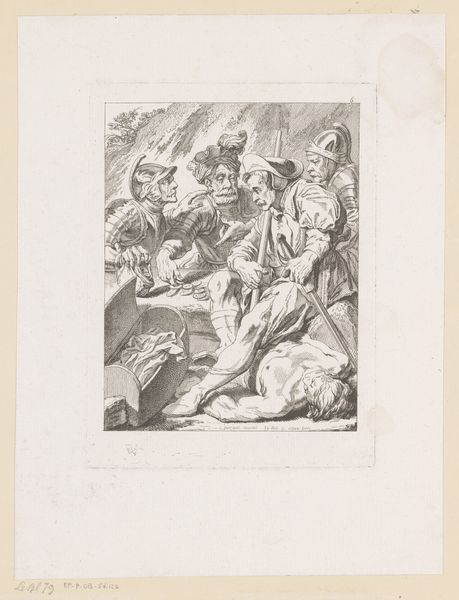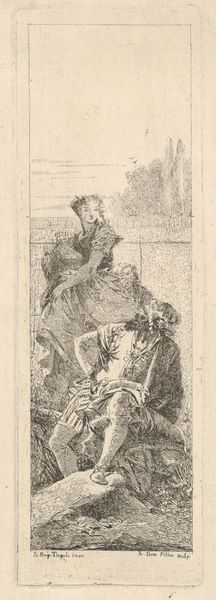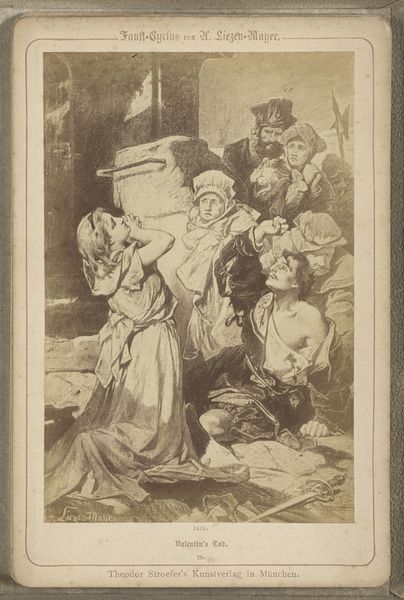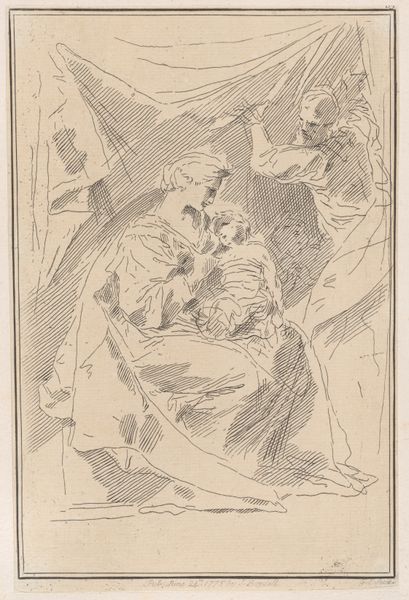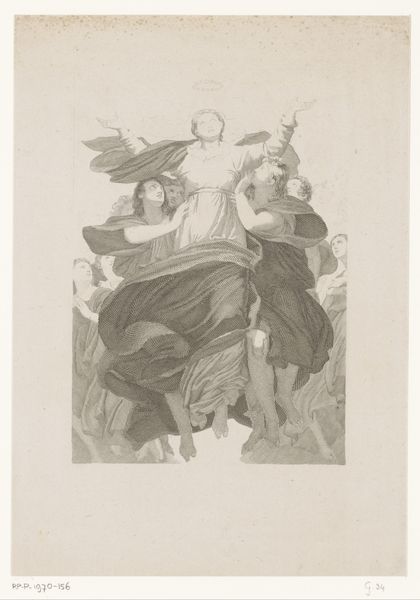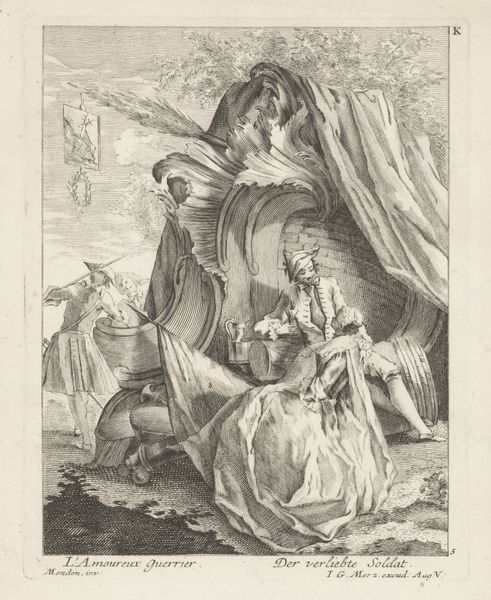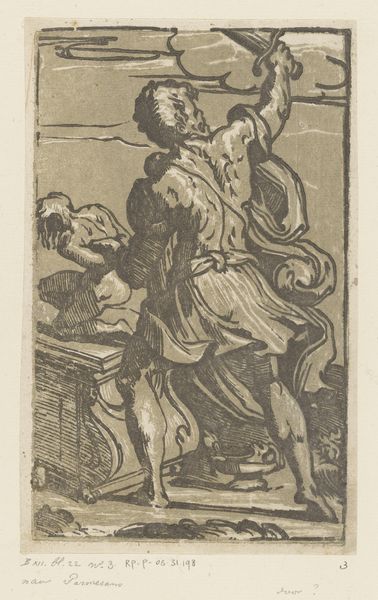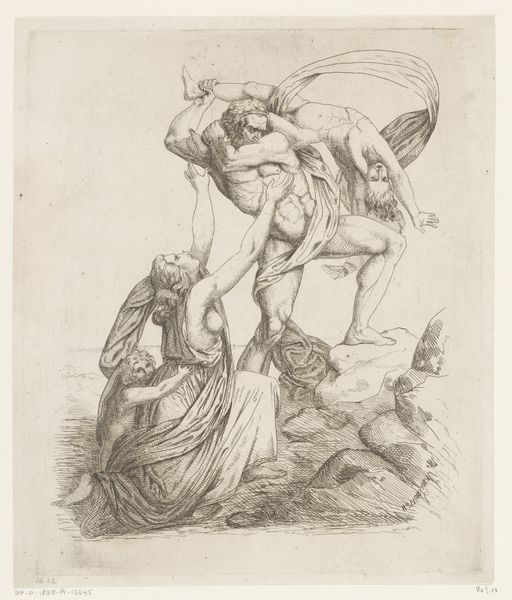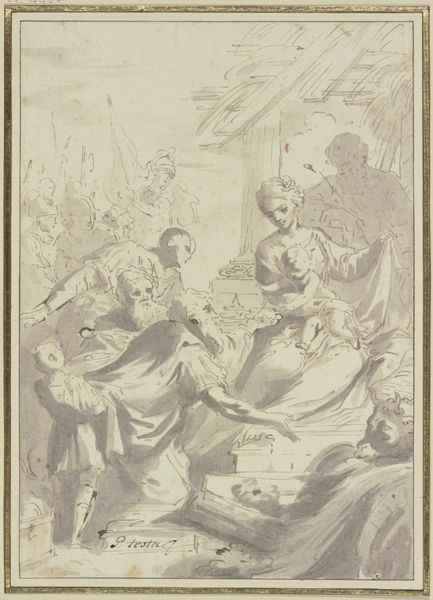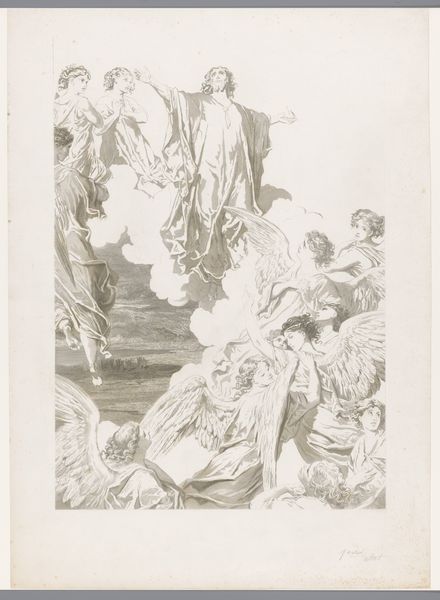
Dimensions: height 219 mm, width 144 mm
Copyright: Rijks Museum: Open Domain
Francois Philippe Charpentier made this print of a begging mother with four young children using etching. The image is entitled ‘Study of Beggars’, and Charpentier, working in late 18th-century France, invites us to consider the place of the impoverished within the social order. Here, the image creates meaning through the language of realism. The artist’s social context is important; inequality grew in France throughout the 1700s, eventually causing the French Revolution. Artists working at the time used their work to comment on contemporary society. Beggars were a common sight in Paris, and images like this would have been shown at the Salon, a state-sponsored art exhibition, where they would have provoked debate about poverty and social responsibility. Did Charpentier intend to encourage empathy for the poor or to reinforce existing social hierarchies? Understanding the social and institutional context can change how we understand a work of art. We might ask, how did the Salon shape public opinion? And how did the art market influence what artists produced?
Comments
No comments
Be the first to comment and join the conversation on the ultimate creative platform.
